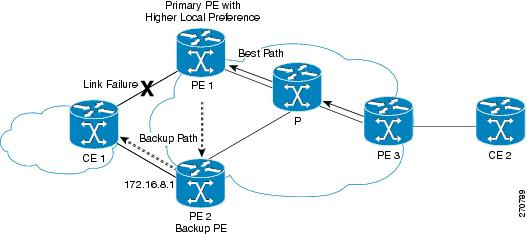Hello:
Any crystal clear explanation with diagram of the Feature “BGP BEST EXTERNAL”
Thanks
Hello Ram
If you have any ideas for future lesson ideas such as this excellent suggestion, you can go to the following link and record your idea.
In the meantime, take a look at this Cisco documentation concerning the BGP BEST EXTERNAL feature.
I’ve compiled a summary of what the feature is and how it works from the above documentation, as this particular documentation is excellent.
Service providers use routing policies that cause a border router to choose a path received over an iBGP session (of another border router) as the best path for a prefix even if it has an eBGP learned path. This practice is popularly known as active-backup topology and is done to define one exit or egress point for the prefix in the autonomous system and to use the other points as backups if the primary link or eBGP peering is unavailable.
The policy, though beneficial, causes the border router to hide the paths learned over its eBGP sessions from the autonomous system because the border router does not advertise any path for such prefixes. To cope with this situation, some routers advertise one externally learned path called the best external path. The best external behavior causes the BGP selection process to select two paths to every destination:
The best path is selected from the complete set of routes known to that destination.
The best external path is selected from the set of routes received from its external peers.
BGP advertises the best path to external peers. Instead of withdrawing the best path from its internal peers when it selects an iBGP path as the best path, BGP advertises the best external path to the internal peers.
An example of the feature in action can be seen below, once again, from the above documentation:
The figure above shows an MPLS VPN using the BGP Best External feature. The network includes the following components:
eBGP sessions exist between the provider edge (PE) and customer edge (CE) routers.
PE1 is the primary router and has a higher local preference setting.
Traffic from CE2 uses PE1 to reach router CE1.
PE1 has two paths to reach CE1.
CE1 is dual-homed with PE1 and PE2.
PE1 is the primary path and PE2 is the backup path.
In the figure above, traffic in the MPLS cloud flows through PE1 to reach CE1. Therefore, PE2 uses PE1 as the best path and PE2 as the backup path.
PE1 and PE2 are configured with the BGP Best External feature. BGP computes both the best path (the PE1-CE1 link) and a backup path (PE2) and installs both paths into the RIB and Cisco Express Forwarding. The best external path (PE2) is advertised to the peer routers, in addition to the best path.
When Cisco Express Forwarding detects a link failure on the PE1-CE1 link, Cisco Express Forwarding immediately switches to the backup path PE2. Traffic is quickly rerouted due to local Fast Convergence in Cisco Express Forwarding using the backup path. Thus, traffic loss is minimized and fast convergence is achieved.
I hope this has been helpful!
Laz
Thank You. Really appreciate
